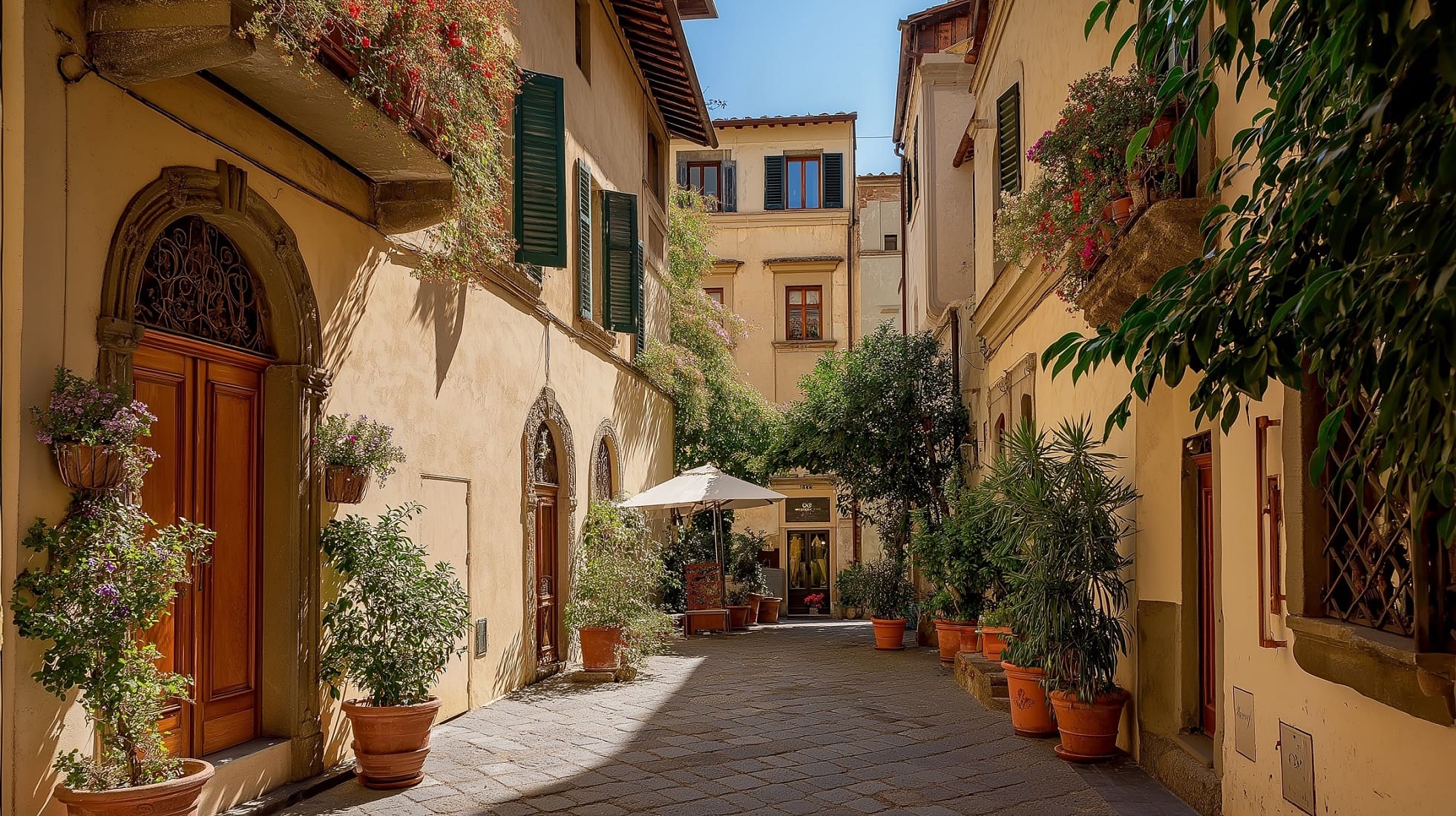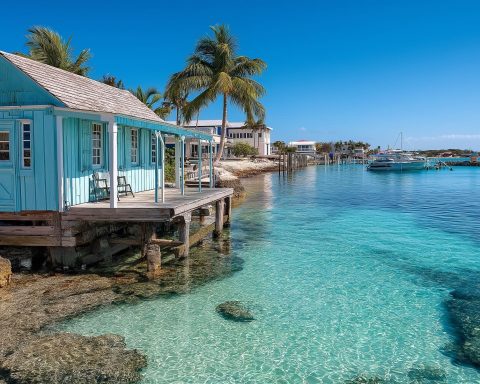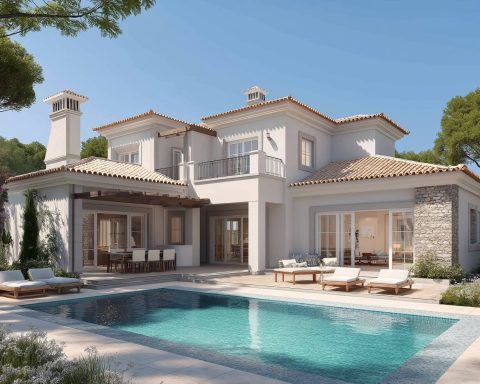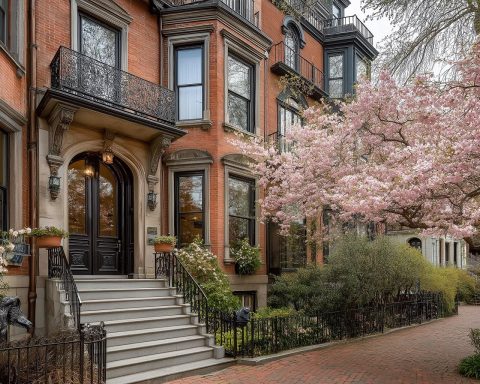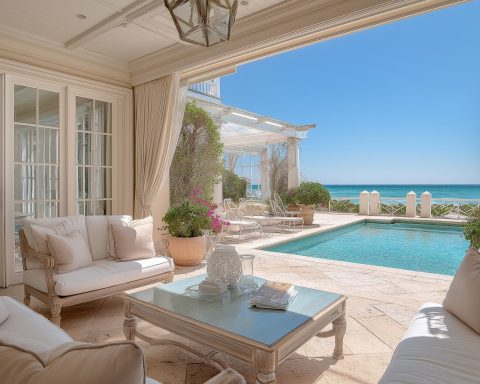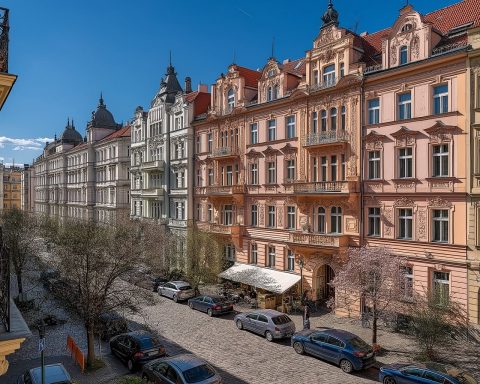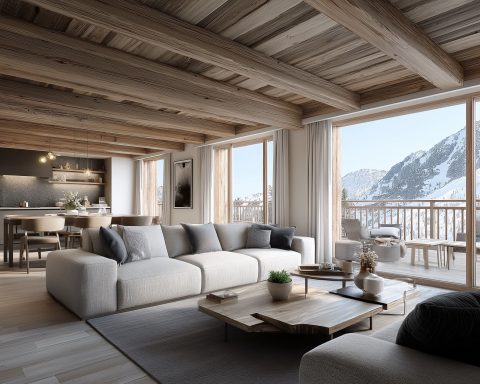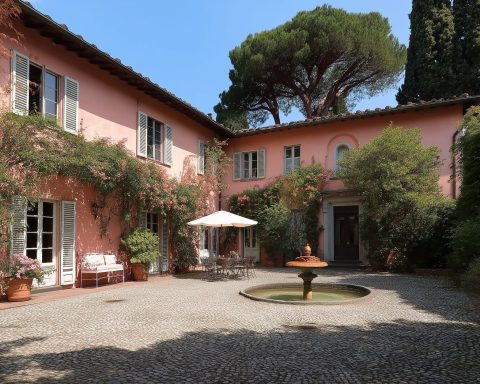Market Overview for 2025 and Beyond
Florence’s real estate market in 2025 is marked by resilience and moderate growth, outperforming many other Italian cities. Coming off a stable 2023, property values in Florence have continued to rise into 2025, driven by strong demand and limited supply. In fact, house prices in Florence were up about 6.1% year-on-year as of Q1 2025 (reaching an average of €4,331 per square meter) globalpropertyguide.com, even as some other markets stagnated. This puts Florence among the most expensive property markets in Italy, on par with cities like Milan and Venice globalpropertyguide.com globalpropertyguide.com. Looking ahead, analysts anticipate continued but gradual price increases rather than rapid spikes, given the high base values and broader economic conditions columbusintl.com blogimmobiliarecavallo.com. Overall, Florence’s real estate outlook remains positive, supported by its global appeal, robust tourism, and enduring desirability as a place to live and invest.
Several factors underpin Florence’s market strength. The city’s status as a UNESCO World Heritage site and international tourist magnet fuels investment interest in both residential and commercial properties. Foreign buyers have been especially active post-pandemic – for example, interest from U.S. buyers in Tuscany (including Florence) has surged over 125% above pre-pandemic levels, contributing significantly to demand investropa.com investropa.com. On the supply side, Florence faces chronic constraints: new construction is limited by strict historical preservation rules and zoning, and many homeowners locked into low-interest mortgages are reluctant to sell (keeping resale inventory tight) investropa.com investropa.com. The result is a demand-supply imbalance that continues to put upward pressure on prices investropa.com investropa.com. However, the pace of growth is moderate and expected to stabilize in coming years (Nomisma, a research institute, forecasts roughly +2% nominal price growth annually in Italy through 2025 blogimmobiliarecavallo.com). In summary, Florence enters 2025 with a robust property market, characterized by high values, strong rental demand, and cautious optimism for steady growth.
Residential Property Trends in Florence
The residential sector in Florence is dynamic, shaped by diverse trends across different segments. Home prices have been on a steady uptrend since the mid-2010s, with a notable post-2022 acceleration investropa.com. By late 2024, the city’s residential listings averaged around €4,300–€4,316 per m² investropa.com investropa.com – significantly above the national average – and continued climbing into 2025. One key driver is international demand: Florence remains a magnet for foreign homebuyers (particularly Americans, Northern Europeans, and increasingly other international investors) who are drawn to Tuscany’s lifestyle and see value in its real estate investropa.com investropa.com. This influx of overseas buyers in the post-pandemic era has added substantial demand for apartments and historic properties. At the same time, local demand has evolved – low interest rates in previous years enabled many Italians to buy, but now higher borrowing costs mean fewer first-time local buyers, shifting the market toward equity-rich and foreign purchasers.
Luxury residences form an important submarket. Florence’s prime and luxury property prices have been rising steadily, supported by scarce supply and global high-net-worth interest investropa.com investropa.com. New luxury development is rare due to preservation rules, so existing high-end villas and prestigious historic-center apartments command a premium. Affluent buyers (both foreign and domestic) continue to snap up palazzos, penthouses, and villas, keeping this segment buoyant investropa.com investropa.com. For example, exclusive hillside neighborhoods and historic palaces see strong demand and limited availability, which experts say will lead to continued price appreciation in the luxury bracket investropa.com investropa.com. Meanwhile, mid-market and affordable housing have their own trends. Florence has an aging population – about 28% of residents are over 65 as of 2024 – which is spurring interest in senior-friendly homes and assisted living developments investropa.com investropa.com. Developers and investors are noting the need for accessible, single-level apartments, elevators in older buildings, and communities geared toward retirees, given Italy’s rising life expectancy (now ~84 years) investropa.com investropa.com. This presents an opportunity to retrofit homes or build residences suitable for seniors (“aging in place”), a niche expected to grow in coming years.
Another notable trend is the impact of students and younger renters on the market. Florence hosts a large student population (over 40,000 University of Florence students, ~11% international) concentrated in areas like Novoli investropa.com investropa.com. The recent expansion of the university campus and new purpose-built student housing (e.g. a 404-bed facility opened in 2024) has boosted Novoli’s profile investropa.com investropa.com. Student housing demand is very high – new dorms filled to near 100% occupancy immediately investropa.com. This has driven up rents in university-adjacent neighborhoods and makes Novoli and similar districts attractive for buy-to-let investors (offering solid rental yields from student tenants) investropa.com. On the flip side, some analysts caution that an oversupply of student accommodations in the long term (if more private dorm projects come online) could eventually stabilize or soften rents in that specific sub-sector investropa.com. Overall, however, the “student effect” is boosting certain areas and rental segments.
Finally, government policies on rentals are reshaping the residential landscape. In response to housing shortages and overtourism, Florence’s authorities have cracked down on short-term rentals (like Airbnb) in the UNESCO-listed historic center. Since 2023, the city banned new short-term rental licenses in the old town, aiming to protect long-term housing supply investropa.com investropa.com. As a result, the number of Airbnb listings in central Florence – which had exploded from ~1,500 in 2018 to 9,000 by 2024 – has started to decline under the new rules investropa.com investropa.com. Additionally, the city is incentivizing landlords to return properties to long-term rentals (for example, offering tax breaks on second-home city taxes if they switch from tourist rentals to regular tenancies) investropa.com. These measures are expected to ease rental supply constraints for locals, but they also mean slightly lower rental yields in the tourist-heavy center (as ultra-lucrative short-term rents are curtailed) investropa.com investropa.com. Indeed, many investors are now looking beyond the tourist core: previously neglected neighborhoods (just outside the centro) offer better long-term rental yields and fewer regulatory hurdles investropa.com investropa.com. In summary, Florence’s residential market in 2025 is characterized by high values and strong demand across the board – from luxury estates to student flats – tempered by policy shifts that seek to balance tourism with residents’ housing needs.
Commercial Property Trends in Florence
Florence’s commercial real estate sector is also active, though on a more modest scale compared to Italy’s larger cities. The office market in Florence has seen renewed growth. Office property values have been rising in late 2024 and early 2025, partly due to post-pandemic business recovery and low supply of modern office space. As of Q1 2025, the average office sale price in Florence is about €3,230 per m², with prime offices in the city center (Duomo area) reaching up to €4,900 per m² mercato-immobiliare.info mercato-immobiliare.info. Office rents average around €17–18 per m² per month citywide mercato-immobiliare.info, and can exceed €23/m² in prestigious central locations mercato-immobiliare.info mercato-immobiliare.info. Notably, office sale prices have climbed roughly +6.6% in the last two quarters mercato-immobiliare.info, indicating robust demand. Much of the office investment focus in Italy remains on Milan and Rome (which captured ~85% of office investment volume in 2024) practiceguides.chambers.com, but Florence attracts companies in sectors like fashion, design, academia, and regional government. There is also growing interest in flex spaces and co-working as Florence’s tech and creative startup scene gradually expands. Overall, while Florence is not a primary office hub, its office market is healthy, with low vacancy for quality space and stable rental yields.
The retail and hospitality real estate segments are heavily influenced by Florence’s massive tourism economy. High-street retail space in the historic center – especially along Via de’ Tornabuoni, around the Duomo, and other prime streets – is in perennial high demand from luxury brands and retailers. Florence is considered a hub for high-end retail in Italy italiancompanyformations.com, given the steady flow of affluent tourists. Rents for prime retail units in central Florence are among the highest in the country, and retail yields are relatively low (reflecting high property values), as investors view luxury storefronts here as trophy assets. Nationwide, 2024 saw a retail investment boom (retail drew the largest share of commercial investment, ~€2.4 billion in Italy) practiceguides.chambers.com, and Florence certainly benefitted as one of the key luxury retail destinations outside Milan. We can also observe a trend of adaptive reuse – historic buildings in central Florence being converted into boutique stores, galleries, or mixed hospitality spaces – as the city tries to balance commercial needs with preservation.
In the hospitality sector, Florence remains a star performer. Tourism has not only rebounded but reached record levels post-COVID: Italy hosted 65 million+ international tourists in 2024, exceeding pre-pandemic numbers gowithguide.com gowithguide.com, and Florence itself welcomed about 3.8 million foreign visitors in 2023 (with nearly 13 million total overnight stays) gowithguide.com. This translates to strong performance for hotels, B&Bs, and holiday rental properties. Hotel occupancy and room rates in Florence have been high, spurring interest from hospitality investors. Indeed, the hospitality real estate investment in Italy rose by 66% in 2024 (to ~€1.8 billion) practiceguides.chambers.com, with luxury hotel developments a priority for many investors. Florence, alongside Rome and Venice, sees continuous investment in new or renovated hotels to cater to luxury travelers. New hotel openings, refurbishments of historic buildings into accommodations, and international brands entering the Florence market are part of this trend.
Additionally, logistics and industrial real estate play a smaller role in the Florence area, but improvements in infrastructure (like the expansion of the Florence airport and highway connectivity) are gradually increasing the appeal of industrial properties on the city’s outskirts. The broader Tuscany region had a stable logistics market in 2024 (Italy’s logistics sector saw yields compressing to ~5.4% prime) practiceguides.chambers.com. Areas near Florence’s northern fringe (e.g. around Osmannoro, Sesto Fiorentino) host warehouses and light industrial parks serving the regional economy, and these have seen stable or improving occupancy. Overall, commercial real estate in Florence is recovering and evolving: offices are seeing renewed demand, retail/hospitality is booming on tourism strength, and even niche sectors like student housing (covered earlier) and logistics are on investors’ radar. The city’s commercial market remains smaller and more specialized than larger metro areas, but it offers unique opportunities tied to Florence’s cultural and economic strengths (arts, tourism, education, luxury goods).
Demand and Supply Dynamics
The demand-supply balance in Florence’s property market is fundamentally tilted in favor of demand, contributing to the consistent price increases. Buyer demand is sustained by multiple streams: local residents (often with family wealth or dual-income professionals), domestic investors from other parts of Italy, and international buyers seeking second homes or investment properties in Tuscany. This broad demand base has grown especially on the international side – for instance, foreign buying interest in Florence surged in the past two years, with inquiries well above pre-2020 levels investropa.com. Americans in particular have been active, buoyed by a relatively strong dollar in recent years which makes Euro-denominated real estate more attractive. Moreover, lifestyle changes (remote work flexibility, desire for cultural experiences) have led some foreigners to relocate or spend part of the year in Florence, further boosting housing demand for both purchases and long-term rentals.
On the other hand, supply remains constrained. Florence’s medieval and Renaissance urban fabric means there is little room for new construction in the city center. New housing development is largely limited to peripheral areas or redevelopment of existing structures (e.g., converting an old building into apartments). Data shows that nationwide residential construction has been subdued – permits for new residential buildings in Italy actually fell slightly in 2024 globalpropertyguide.com – and Florence exemplifies this trend. The city has not seen significant increases in housing stock; even as of 2024, many homeowners are holding onto properties thanks to cheap mortgages they secured in prior years investropa.com. This lock-in effect (with ~60% of Italian mortgage-holders paying below 4% interest businesswire.com) reduces the turnover of homes for sale, as people are reluctant to sell and lose their low rates. Thus, the inventory of homes on the market is tight, especially in desirable areas.
The mismatch between demand and supply has several implications. First, it fuels competition and bidding for the properties that do come up for sale, thereby underpinning price growth. Second, it pushes buyers to consider alternative locations – when the historic center has few options or very high prices, demand spills into surrounding neighborhoods or even nearby towns. We see this in Florence with rising interest in semi-central districts (like Gavinana, Campo di Marte, Coverciano) and suburbs with good transit links (such as Scandicci via the tram) lanazione.it. Third, limited supply has driven a rental housing squeeze: with many properties tied up in short-term rentals until recently, long-term renters have faced difficulty finding apartments, sending rents upward. The city’s policy response (restricting new vacation rentals) is an attempt to free up supply for residents. Indeed, as some Airbnb units return to the long-term market, we may see a slight easing of rental supply constraints in late 2025, but for now demand still far outstrips supply in most segments.
One bright spot on supply is the repurposing and development of certain large sites. Florence is witnessing a few urban regeneration projects – for example, the Manifattura Tabacchi (a former tobacco factory) is being transformed into a mixed-use complex with creative spaces, residences, and student housing; and the area around the new Tram lines (extension to the airport, etc.) is spurring mid-rise residential projects in the suburbs. These projects will add some units and modern commercial space, but on the whole they are not enough to radically shift the city’s supply dynamics. Vacancy rates for quality properties remain very low across both residential and commercial sectors, emphasizing the undersupply. In summary, Florence’s market is characterized by strong demand drivers (local and global) against a backdrop of limited supply growth, a recipe that has kept real estate values on a steady upward trajectory. Until either new construction increases or demand cools, this dynamic is likely to persist, keeping the market competitive for buyers and renters alike investropa.com investropa.com.
Price Trends and Forecasts
Property prices in Florence are among the highest in Italy and have shown a clear upward trend in recent years. As of early 2025, the average residential price in the city is roughly in the mid-€4,000s per square meter, with variation by neighborhood (as detailed in the table below). This represents significant growth since the mid-2010s; for instance, late 2023 saw average home values around €4,300/m², up from about €3,500/m² in 2016 investropa.com. In the 2020-2022 period, price growth was relatively steady (3-5% annually), and despite the pandemic’s temporary slowdown, the market picked up momentum afterward. 2024 in particular was a turning point: while the national Italian market was fairly stable (even a slight dip in Q1 2025 nationally globalpropertyguide.com), Florence saw notable price gains (~+6% YoY) globalpropertyguide.com. This outperformance is attributed to the city’s unique demand factors discussed earlier.
For 2025 and the next few years, most analysts anticipate moderate growth in Florence’s real estate prices rather than a sharp boom or bust. A forecast by Immobiliare.it’s research team projected that 2024 would bring modest increases in sale prices in major cities – e.g. +2% in Milan, +1.1% in Rome – and indeed Florence’s prices have been rising in the low-single-digit range, which is expected to continue barring any shocks columbusintl.com. Nomisma, a prominent Italian real estate research institute, similarly expects a phase of stabilization: their outlook through 2025 sees Italy’s housing prices growing only mildly (~1.5–2% per year nominal) and transactions leveling off around 600-700k nationwide grimaldi.casa housinganywhere.com. In Florence’s case, being a high-demand market, this could translate to slightly higher-than-average growth (perhaps on the order of 2–4% per year) if economic conditions remain benign. It’s worth noting that interest rates play a role – the European Central Bank began cutting rates in late 2024 to stimulate growth practiceguides.chambers.com practiceguides.chambers.com, which could make mortgages a bit more affordable and support prices. However, mortgage rates are still much higher than the ultra-low levels of 2021, so that could temper some local buyer activity.
When it comes to rental prices, Florence has seen even more dramatic trends. Rents have been climbing rapidly, to the point that Florence is now vying with Milan as Italy’s most expensive rental market. By late 2024, the forecast was that Florence’s average rents would hit €29 per m²/month, overtaking Milan (around €25) columbusintl.com. This is corroborated by current figures: as of early 2025, average citywide rent is about €21–22 per m² (which includes all areas and property sizes) lanazione.it, but centrally located apartments commonly achieve €25–30/m² for long-term leases, and even higher in short-term contexts. In percentage terms, rents jumped by an estimated +18% in Florence in 2024 columbusintl.com columbusintl.com – a huge surge reflecting the post-COVID tourism rebound and housing scarcity. Going forward, rent growth may moderate if more supply enters the long-term market (due to the Airbnb restrictions), but with tourism still booming and many students and professionals seeking housing, rents are expected to remain high. Investors can thus expect solid rental yields, especially outside the strict historic core.
In summary, price forecasts for Florence suggest a continued gentle upward slope. Barring unforeseen economic downturns, property values are likely to keep rising in the next 2-3 years, albeit at a slower pace than the recent spike. The consensus is that Florence’s fundamentals – international appeal, limited supply – will prevent any major price correction, insulating the market better than less sought-after regions. Risks like higher interest rates or policy changes could cap growth, but a significant decline in values appears unlikely under current conditions. Prospective buyers in 2025 should plan for high entry prices that will probably inch higher over time, and prospective sellers can be cautiously optimistic about holding their values or achieving modest appreciation. On the rental side, landlords in Florence can expect continued strong rental demand and high rents, although new regulations might shift some of that demand geographically (e.g., more toward legally rentable zones slightly outside the center). Overall, Florence’s real estate prices in 2025 and beyond are forecast to trend upward gradually, reinforcing the city’s status as a stable and attractive long-term investment location columbusintl.com blogimmobiliarecavallo.com.
Key Neighborhoods and Areas to Watch
Florence is a city of distinct neighborhoods, each with its own real estate profile. Understanding the local geography is crucial, as prices and trends vary greatly by area. Below is a summary table of average residential prices in Florence by neighborhood (with corresponding rental levels), illustrating the range from the priciest central districts to more affordable outskirts:
| Neighborhood (Zone) | Avg. Sale Price (€/m²) | Avg. Rent (€/m² per month) |
|---|---|---|
| Historic Center (Centro) | ~€5,330 | ~€24.0 |
| Oltrarno (Across Arno) | ~€5,260 | ~€25.3 |
| Michelangelo – Porta Romana (Hillside south) | ~€5,383 | ~€21.6 |
| Campo di Marte – Libertà (North-central) | ~€4,420 | ~€20.9 |
| Leopoldo – Porta al Prato (NW semi-central) | ~€3,835 | ~€16.4 |
| Firenze Nord (Novoli) | ~€3,470 | ~€15.2 |
| Coverciano – Bellariva (East residential) | ~€4,240 | ~€15.9 |
| Isolotto (SW residential) | ~€3,260 | ~€12.9 |
| Ugnano – Mantignano (Periphery West) | ~€2,800 | ~€14.3 |
Source: Immobiliare.it data (mid-2025) catonecasa.it catonecasa.it. These figures show that central/historic areas command prices well above €5,000/m², whereas peripheral neighborhoods on the edge of the city can be half that level. Notably, Oltrarno (the “other side of the Arno” known for its artisan workshops and authentic vibe) is almost as expensive as the primary historic center, reflecting high demand for its charm catonecasa.it. The Michelangelo–Porta Romana area, which includes the prestigious hill just south of the river (near Piazzale Michelangelo and Boboli Gardens), is one of the most exclusive residential zones, with spacious villas and luxury flats that push prices to the top of the range catonecasa.it catonecasa.it. On the opposite end, areas like Isolotto (a post-war residential district) and Ugnano/Mantignano (semi-rural outskirts) represent the more accessible market, attracting families looking for value and quiet surroundings at ~€3,000/m² or less catonecasa.it catonecasa.it.
Neighborhoods to watch for growth and investment potential include several outside the traditional tourist hotspots. The Novoli/Firenze Nord area is one such example – with the new university campus expansion and private student housing projects, Novoli’s profile is rising. Property values there (around €3,300–€3,500/m²) are expected to climb further as student and faculty demand increases and ongoing infrastructure improvements (like the tram line to the center and airport) enhance connectivity investropa.com investropa.com. Similarly, the Campo di Marte district (north of the center, home to the Artemio Franchi football stadium and a mix of early 20th-century homes) offers slightly lower prices than the center (~€4,300–€4,500/m²) catonecasa.it but strong appeal for those seeking a balance of history and modern amenities. Campo di Marte is also earmarked for redevelopment with the stadium renovation plans, which could further stimulate the local real estate market.
The Oltrarno and adjacent areas like San Niccolò and Bellosguardo are also key areas to watch. Oltrarno’s authenticity and Bohemian atmosphere have long been a draw; now, with some investors turning away from the over-touristed central duomo area, Oltrarno is seeing heightened interest. Reports indicate rental yields in Oltrarno are higher than in the historic core, which is attracting investment there investropa.com investropa.com. Additionally, Bellosguardo and Pian dei Giullari (the hills to the south-west) and Fiesole (hilltown to the north) remain perennial favorites for luxury buyers seeking villas with views – these areas may not have large volume of transactions, but they represent the top end of the market with some properties exceeding €6,000–€8,000 per m² for truly exceptional estates.
On the affordable end, neighborhoods on the periphery that offer good transport links are up-and-coming. For example, Scandicci, a separate municipality just southwest of Florence, is connected by tram and has seen price increases due to its improved accessibility. Scandicci’s average prices (~€3,240/m²) are much lower than Florence city, but they’ve been rising (around +2% year-on-year) as more people consider it a viable place to live while working or studying in Florence lanazione.it lanazione.it. The same goes for Sesto Fiorentino to the northwest (near the university’s science campus and some corporate offices), averaging ~€3,300/m² lanazione.it. These suburban markets benefit from overflow demand – families and budget-conscious buyers finding city prices too steep. With ongoing expansion of the tram network and other infrastructure, areas along those lines (e.g. Careggi hospital area, Rifredi, Bagno a Ripoli with a planned tram) are likely to see positive real estate impacts.
In summary, Florence’s “hot” areas span from the ultra-prime center (still a blue-chip investment albeit at high cost), to trendy adjacent districts (Oltrarno, San Marco, etc.), to growth zones like Novoli and semi-suburbs where relative affordability and development projects promise upside. Investors and homebuyers should match their goals with the neighborhood: whether it’s long-term capital appreciation in a historic district, strong rental yields in a student area, or value plays in the path of infrastructure development. Florence’s diverse quartieri ensure that there’s a segment for every strategy in 2025’s market.
Legal and Tax Considerations (Including for Foreign Investors)
Investing in or purchasing property in Florence requires navigating Italy’s legal and tax framework. The good news is that Italy imposes no blanket restrictions on foreign buyers: non-Italians (including non-EU citizens) can freely buy real estate in Italy, as long as their home country allows Italians to do the same (reciprocity is generally assumed for most countries) getgoldenvisa.com veles-club.com. There is no special permit needed just to purchase property – a foreign buyer must simply obtain an Italian tax identification code (codice fiscale) and comply with the standard purchase procedure. Transactions are handled by a notary (civil law notary) who prepares the deed, performs due diligence on title, and collects taxes. It’s common for foreign buyers to hire an English-speaking lawyer or real estate attorney to assist, but it’s not legally required. Title is secure in Italy with a reliable land registry, and ownership by foreigners (personal or via a company) is fully recognized.
From a tax perspective, buyers should be aware of the following key points:
- Purchase Taxes: When buying a resale residential property from a private seller, the main cost is the registration tax, which is 9% of the cadastral value (an assessed value usually lower than market value) for non-residents or second-home purchases. If the buyer is moving their residency and it’s their first home in Italy, a reduced 2% rate can apply, but foreign investors not planning to reside generally pay the 9% linkedin.com. For new properties bought from a developer, instead of registration tax, there’s VAT (typically 10% for residential, or 22% if a luxury category) plus a fixed registration fee. Additionally, notary fees (roughly 1–2% of price) and agency commission (if using a realtor, ~3–4%) need to be budgeted. All in, a foreign buyer might expect transaction costs around 10–15% of the purchase price, inclusive of taxes and fees.
- Ownership Taxes: Italy has an annual property tax called IMU (Imposta Municipale Unica) on second homes. Since foreign owners won’t usually qualify a Florence property as a primary residence (prima casa), IMU will be due each year. The rate is set by the local municipality (Florence) and is based on the cadastral value with certain multipliers; in practice it often ranges roughly 0.4–0.6% of market value per year, though it varies. (Primary homes of residents are generally exempt from IMU, but that exemption won’t apply if you’re not an Italian resident in that home). There may also be a small annual refuse/maintenance fee (TARI).
- Rental Income: If you rent out the property, rental income is subject to tax in Italy. Long-term residential leases can opt for a favorable flat tax regime called cedolare secca – a flat 21% tax on gross rent (with no further income tax) if certain conditions are met. Otherwise, rental income is added to your ordinary income and taxed at progressive rates (which can be higher). For short-term rentals (Airbnb-style), income is also taxable and you are supposed to register the activity; some owners use agencies or local property managers to handle taxes and compliance. Italy has tax treaties with many countries to avoid double taxation on rental income. If structured properly, foreign investors can minimize double tax, often by getting a foreign tax credit for Italian taxes paid.
- Capital Gains Tax: If you sell the property later at a profit, Italy charges a capital gains tax of 26% on the gain, but only if the property was held for less than 5 years. Properties owned for more than five years are exempt from capital gains tax, encouraging longer-term holding. (An exception: if you are an Italian resident and the home was your primary residence, gains are tax-free regardless of years held).
- Inheritance: Italy does have inheritance and gift taxes, but with fairly high thresholds for close relatives. A property in Italy will be subject to Italian succession rules and taxes if the owner passes away; it’s wise for foreign owners to get advice on wills and perhaps hold the property through a company or other vehicle if estate planning is a concern.
Italy has introduced some tax incentives to attract foreign high-net-worth individuals and workers in recent years, which, while not property-specific, are relevant. For example, a new resident to Italy can apply for a flat tax regime on foreign income (paying a lump sum of €100,000 per year on all offshore income) – useful for wealthy individuals who move to Italy (often those who buy luxury homes) idealista.it. There’s also a regime for foreign pensioners moving to certain regions (a 7% flat tax on foreign pension income, though this applies to specific southern areas, not Tuscany). Additionally, Italy offers an “elective residence visa” for retirees or financially independent foreigners who want to live in Italy; while it requires proof of sufficient income, many foreigners who purchase homes use this route to reside part- or full-time in Florence. It’s important to note that buying property itself does not grant residency – you still need a visa/status to live in Italy long-term if non-EU. But owning real estate can support a visa application (demonstrating accommodation and financial commitment).
Legally, foreign buyers should also consider:
- Financing: Italian banks do lend to non-residents, though typically a 50–60% loan-to-value mortgage is the max for foreigners and interest rates may be slightly higher for non-resident loans. Many foreign buyers in Florence pay cash or use financing from their home country using equity, to avoid Italian mortgage bureaucracy.
- Property checks: Always conduct thorough due diligence – verify property cadastral details, ensure no liens or unauthorized building works, and that the person selling has clear title. The notary usually handles these checks. Old buildings in Florence might have historic restrictions (vincoli) if they are protected by the fine arts authority; this doesn’t prevent purchase, but means any renovations need special approvals.
- Rental regulations: As discussed, if you plan to rent out, be aware of local ordinances. For example, short-term rentals are now heavily restricted in Florence’s UNESCO historic center – a new owner cannot automatically start an Airbnb business there due to a cap on new licenses investropa.com. However, outside the old town, rules are more lenient, though registration with the municipality is required. Always check the latest local regulations if rental income is part of your plan.
In summary, foreign investors in Florence real estate enjoy a generally investor-friendly environment with no ownership barriers and reasonable taxation, especially if structured correctly. The main takeaways are to plan for purchase taxes (which are higher if you don’t become a resident), to ensure compliance with rental laws, and to leverage Italy’s tax treaty network and special regimes to optimize your investment. With proper legal guidance, buying in Florence can be a smooth process – Italy’s well-established property laws and professional notary system provide a secure transaction framework. Many overseas buyers have successfully made Florence their second home or investment destination, attracted not just by the city’s beauty but also by the stable property rights and potential tax benefits available.
Opportunities and Risks for Real Estate Investment
Florence presents a blend of compelling opportunities and notable risks that any real estate investor or homebuyer should consider in 2025:
Opportunities:
- Robust Rental Yields: Thanks to the city’s high rental demand, rental yields in Florence are attractive, especially relative to many European cities. Gross yields for apartments average around 6–8% in Florence globalpropertyguide.com, which is quite healthy. For example, small apartments in student areas or just outside the tourist center can yield above 7% annually globalpropertyguide.com. This is an opportunity for investors looking for income – whether via long-term rentals to locals/students or regulated short-term rentals to tourists. High rents (Florence’s rents are among Italy’s highest columbusintl.com) combined with still-manageable purchase prices (compared to London, Paris, etc.) make for good cash-flow potential.
- Capital Appreciation Potential: Florence’s property market has historically been less volatile and more steadily appreciating. Over a 5-10 year horizon, owners have typically seen values rise. With the city’s enduring appeal and limited construction, long-term capital growth prospects remain positive. Investors betting on specific neighborhoods (e.g. areas slated for infrastructure improvements like new tram lines or zones undergoing gentrification) could outperform the city average. The example of Oltrarno and other once-overlooked districts now rising in value shows how targeting the right area yields results.
- Diversification and Safe Haven: Investing in Florence offers diversification for international investors. Italian real estate, and Florence in particular, tends not to move in perfect lockstep with, say, stock markets or even other property markets globally. During past global downturns, Tuscany’s property often held value relatively well, as wealthy buyers snapped up “real assets.” The tangible value of owning a historic Florentine apartment or a Tuscan villa provides a safe-haven appeal. In uncertain times, hard assets in culturally significant locations can retain demand.
- Development and Value-Add Opportunities: For those willing to take on projects, Florence has many older properties that can benefit from renovation. Italy has periodically offered tax bonuses for renovations (e.g. the recent “Superbonus 110%” incentive, which, though winding down, showed government support for property improvements). Rehabilitating a centuries-old apartment to modern luxury standards or converting a large property into multiple units can significantly increase value. There’s also opportunity in niche segments like senior living facilities or student housing, which have demand exceeding supply – investors who develop or convert properties to serve these needs could see strong returns.
- Tourism-Driven Ventures: Beyond straightforward residential, Florence’s tourism boom opens opportunities in hospitality real estate. Owning a small guesthouse, B&B, or serviced apartment (in compliance with new rules) can be lucrative. Additionally, commercial spaces catering to tourists (restaurants, shops) in key locations are a bet on the continued strength of Florence’s visitor economy (over 5 million museum visitors like at the Uffizi in 2023 gowithguide.com gowithguide.com and record tourist numbers). As Italy’s tourism comprised over 10% of GDP in 2023 gowithguide.com, Florence stands at the forefront of this, presenting a solid backdrop for tourism-related property investments.
Risks:
- Economic and Interest Rate Risk: Italy’s economy is growing slowly (around 0.5–1% GDP growth globalpropertyguide.com globalpropertyguide.com) and remains susceptible to shocks. A recession or rise in unemployment could dampen local housing demand. Moreover, while interest rates have stabilized, any future rise in European interest rates could reduce affordability for buyers using financing and put downward pressure on prices. Global economic woes (e.g., another pandemic wave or geopolitical crisis) could also cut into foreign buyer interest and tourism, directly impacting Florence real estate.
- Regulatory Changes: The regulatory environment is a key risk, especially for rental investors. We’ve already seen stricter short-term rental rules in Florence’s center investropa.com; it’s possible the national government could implement broader controls (there have been discussions in Italy about a national law on short-term rentals and even second-home taxes in tourist cities). Additionally, tax laws can change – while Italy currently has investor-friendly flat taxes and incentives, a shift in government priorities could alter tax treatment for foreign owners or introduce new property levies. Keeping an eye on policy is crucial.
- Liquidity and Transaction Costs: Real estate in Florence (and Italy generally) is not very liquid. Properties, especially high-end or unique ones, can take many months or even years to find a buyer at the desired price. If you need to exit quickly, you might have to discount significantly. Transaction costs are also high (as noted, ~10% or more when buying, and sellers often pay agent fees of ~3% too), which means you typically need prices to rise by over 15% just to break even on a round-trip transaction. This illiquidity and cost mean investors should have a multi-year horizon and not expect to flip properties easily.
- Structural and Maintenance Costs: Florence’s buildings are old – owning a Renaissance-era apartment means dealing with century-old infrastructure. Unexpected costs for restoration, dealing with Italy’s bureaucracy for permits (especially if the property is officially historic), and ongoing maintenance can be considerable. New energy-efficiency regulations from the EU may require upgrades to older buildings in coming years (Italy is discussing how to implement these). These factors can eat into investment returns or complicate renovations. Due diligence on building condition and potential future obligations (e.g., façade restorations mandated by the condominio or seismic retrofitting) is important.
- Market Saturation in Some Segments: While demand is high, certain sub-markets could saturate. For instance, the luxury market relies on a relatively small pool of buyers; if too many luxury properties hit the market at once (say, developers converting palazzos to high-end condos), sale times could lengthen. Similarly, as noted, if a lot of new student housing gets built, those rents could stagnate or fall. The key risk is assuming that past demand growth continues unabated – investors should be cautious of extrapolating trends. For example, if tourism were to be curbed (the city administration sometimes floats ideas to control visitor numbers to fight overtourism), that could affect short-term rental viability.
In weighing these factors, prudent investors in Florence will adopt a long-term, value-driven approach. The opportunities to earn solid returns and enjoy asset appreciation are real, but one must also prepare for challenges like legal complexity and market fluctuations. Diversification within Florence (a mix of core and emerging neighborhoods, or a mix of rental types) can mitigate some risk. Many investors find that the intrinsic value of owning Florence real estate – a foothold in one of the world’s great cities – is itself a reward, and with careful planning the financial rewards can align with that experience. As always, conducting thorough research, possibly consulting local real estate experts, and having a clear strategy will help in making the most of Florence’s real estate market while navigating its risks.
Economic and Tourism Factors Impacting the Market
Florence’s real estate cannot be separated from the broader economic and tourism context of the region. The city’s fortunes are closely tied to its role as a cultural and tourist capital, as well as Italy’s overall economic health.
Tourism is arguably the biggest external driver for Florence’s property market. By 2024, tourism in Florence roared back to all-time highs – the city recorded nearly 13 million overnight stays in 2023 (about 75% of those by international visitors) gowithguide.com, and the trend in 2024 was even higher. To put it in perspective, the metropolitan population of Florence is around 700,000, but during peak months the effective population (with tourists) swells to ~1.5 million people gowithguide.com. This massive influx creates heavy demand for short-term accommodations – hotels, vacation rentals, etc. – which indirectly affects the housing market (many apartments were converted to tourist rentals, as discussed). It also means that businesses catering to tourists (shops, restaurants) thrive, supporting the commercial real estate rents in prime areas. Cultural attractions like the Uffizi Gallery (5 million visitors in 2023) gowithguide.com and the city’s Renaissance heritage keep Florence perennially on travel “bucket lists.” As long as Florence remains a top global destination – and Italy’s #1 city for art and history tourism – there will be a strong underpinning to property demand: foreigners often buy second homes after visiting, and investment in hospitality properties remains attractive.
However, tourism also poses some risks or challenges: overtourism has become a concern, prompting regulations (like the rental limits) and possibly deterring some locals due to crowded city conditions. There’s an ongoing debate about sustainable tourism – if the city were to impose further restrictions (for example, a cap on daily visitors or stricter hotel licensing), that could have mixed effects on real estate. But in general, the local government is trying to manage tourism in a way that protects residents’ quality of life, which in the long run is positive for the real estate environment (ensuring the city remains a livable place, not just an open-air museum).
On the broader economic front, Florence benefits from being the capital of Tuscany, a relatively prosperous region. The city’s economy includes not just tourism but also fashion (some major Italian fashion houses are based here or nearby), education (several universities and international schools), and manufacturing of luxury goods (perfumes, leather goods, etc.). The unemployment rate in Tuscany has been lower than the Italian average, and Florence enjoys a sizable middle class. As of 2022, the average annual income in the Florence area was about €24,000 lanazione.it, higher than many southern cities, which supports local purchasing power for housing (though still modest relative to housing costs). Italy’s national economic growth is modest – around 0.8–1% forecast for 2025 globalpropertyguide.com – and high public debt sometimes casts uncertainty. But any major economic policy or shock (like austerity measures, significant tax hikes, etc.) could impact consumer confidence and real estate. So far, despite slow growth, low interest rates until recently and cultural factors (Italians favor real estate as an investment) have kept the property market stable.
One significant factor has been the European Central Bank’s monetary policy. In 2022-2023, rising inflation led to higher interest rates which started to cool some European housing markets. By late 2024, the ECB pivoted to small rate cuts as inflation eased practiceguides.chambers.com. For Italy, and Florence by extension, lower rates mean mortgages become a bit more affordable, potentially bringing some buyers back who were priced out by 2023’s high rates. Many Florentine buyers, though, rely on equity/cash or smaller loans, so the impact is moderate – but it’s a positive trend for demand. Inflation also affects construction costs: the surge in material costs in 2021-2022 made building or renovating more expensive, which slowed some projects. If inflation remains in check, construction may pick up again, adding supply gradually.
Additionally, foreign exchange rates and global economics influence the market. A strong dollar (or pound, etc.) against the euro effectively makes Florence real estate cheaper for those buyers. In 2022-2023 the euro was relatively weak, and indeed there was a noted increase in American buyers taking advantage investropa.com. Should the euro strengthen significantly, it might dampen some foreign enthusiasm or make European buyers relatively more active. Political stability in Italy and the EU also plays a role in foreign investor confidence – any instability can momentarily slow down foreign purchases, whereas periods of stability (like Italy’s current government signaling pro-investment policies) help sustain interest.
Lastly, comparative regional factors: within Tuscany, Florence is the prime city, but buyers do consider other areas like coastal Tuscany (e.g., Versilia coast: Forte dei Marmi, etc.) or hilltop towns (like Siena, Lucca, Pisa). For context, those markets are generally cheaper (e.g., Lucca city averages around €3,100/m² idealista.it, Pisa even less), except for special enclaves (Forte dei Marmi in Lucca province has ultra-high villa prices due to wealthy international residents). Sometimes if Florence gets “too expensive,” a segment of buyers might opt for a large countryside home 30 km out for the same price as a small city flat. So Florence competes within the Tuscany region for certain buyers. As of 2024, Florence remained the most expensive city in Tuscany (around €4,300–€4,400/m²), followed by some coastal hotspots and Lucca lanazione.it idealista.it. The Florence market’s health can actually boost surrounding markets – for example, someone priced out of Florence might buy in Prato, Pistoia, or Arezzo (all nearby cities with lower prices), raising those markets slightly. Conversely, any slump in Florence would likely be felt across Tuscany as a negative signal.
In conclusion, tourism and economic trends strongly favor Florence real estate at present: tourism provides a steady influx of demand and income to the city, and the broader economy, while low-growth, is stable enough to support continued real estate investment. Florence’s global appeal insulates it to a degree from local economic hiccups – international interest can prop it up even if domestic demand softens. Nonetheless, investors should watch tourism policies, European economic developments, and regional competition as these factors will continue to shape the market’s trajectory. As long as Florence remains a thriving cultural and economic hub, its real estate sector will likely remain vibrant.
Comparisons to Surrounding Tuscan Areas
When evaluating Florence’s real estate, it’s useful to compare it with other areas in Tuscany, as well as its immediate suburbs, to get context on its relative performance and attractiveness.
Within the metropolitan area, Florence’s prices are substantially higher than those in adjacent towns. For instance, as of early 2025 the average home price in:
- Florence city: ~€4,365/m² (with rents ~€21.1/m²) lanazione.it.
- Sesto Fiorentino (north suburb near Florence’s airport): ~€3,313/m² (rent ~€13.1/m²) lanazione.it.
- Scandicci (southwest, connected by tram): ~€3,240/m² (rent ~€13.5/m²) lanazione.it lanazione.it.
This means buying in Florence proper commands a 30-35% premium over these nearby towns. Even within Florence’s wider province, many semi-rural areas or smaller communities have far lower prices. For example, a town like Empoli or Pistoia (not far from Florence) might average in the €2,000s per square meter. The draw of being in the historic city, or within walking distance of the Duomo, clearly carries significant cost. However, the suburbs are gaining interest: improved transportation (like the tram to Scandicci and soon to other suburbs) and the search for affordability are causing convergence to a degree. Scandicci, as noted, saw price increases partly due to the tram connection lanazione.it, and it even has some “VIP” hillside localities (Mosciano, etc.) with prices pushing €3,800–€4,000/m², albeit for large villas lanazione.it. The gap between Florence and its suburbs might narrow slightly if city prices keep rising faster than suburban ones, but Florence’s cachet likely ensures it will remain the pricier choice.
Comparing Florence to other Tuscan cities:
Tuscany’s other provinces have real estate markets that are generally smaller and less expensive:
- Siena – A historic city and tourist center, Siena’s prices are high for its size but still typically lower than Florence’s. Many parts of Siena range around €3,000–€3,500/m². It lacks Florence’s international business and education sectors, so demand is more purely from tourism and locals.
- Pisa – Known for the Leaning Tower, Pisa has moderate prices (perhaps €2,200–€2,800/m² on average). Its market is influenced by the university and some tech industry, but again, not as internationally driven as Florence’s.
- Lucca – Lucca is interesting: it has become quite popular with foreign buyers (a charming walled city). According to data, Lucca’s province had some of the higher prices in Tuscany (around €3,165/m², making it one of the costliest after Florence) idealista.it. This is likely because Lucca includes wealthy enclaves (the coastal Forte dei Marmi in Lucca’s province is extremely expensive). Lucca city itself might average ~€2,500/m², but its luxury segment is boosted by expat interest.
- Arezzo, Pistoia, Grosseto, etc. – These provinces and cities are significantly cheaper, often in the €1,500–€2,500/m² range. They attract some foreign buyers looking for countryside farmhouses (especially in Chianti areas overlapping Siena/Arezzo) but do not compete with Florence directly.
One notable area for comparison is the Chianti countryside between Florence and Siena. Many international buyers who love Tuscany weigh city vs countryside. In Chianti (e.g. towns like Greve in Chianti, Gaiole in Chianti), prices per m² can be lower – often €2,500–€3,000/m² on average immobiliare.it immobiliare.it – but note that country properties tend to be larger and come with land, so total prices can be high even if €/m² is moderate. The market for rural villas and farmhouses was very strong during the pandemic (people sought space), and remains robust, but it’s a very segmented market (a beautifully restored farmhouse can fetch millions, whereas a needing-renovation cottage might be relatively cheap). The Florence market vs. Chianti often comes down to lifestyle preference: city convenience and rental potential (Florence) versus countryside tranquility and often larger properties (Chianti). Some investors choose Chianti for personal use (holiday homes) and Florence for pure investment (rentals).
Coastal Tuscany (e.g. Versilia coast in Lucca province, and Monte Argentario in the south) is another comparison: These areas are second-home markets for Italians and foreigners seeking the sea. Forte dei Marmi (Versilia) is one of Italy’s priciest spots (villas there can exceed €10,000/m² easily due to wealthy Russian and European buyers). But that’s a niche luxury market – not directly comparable to Florence’s broad market. Generally, outside a few hotspots, coastal Tuscany is cheaper than Florence.
In terms of market trends, Florence often leads or mirrors the broader Tuscan trend. For example, in 2024 Tuscany’s overall house prices were up around 1%–2% idealista.it, similar to national averages, but Florence outperformed with closer to 5%+ gains in that period. Surrounding areas sometimes see a halo effect: when Florence gets too hot, some demand spills over. A case in point: smaller cities like Prato (just 20km from Florence) have seen increased home sales from people who work in Florence but buy in Prato for cost reasons. But none of these places can replicate Florence’s unique draw; thus, Florence retains a strong premium and tends to be more stable. In downturns, it also often holds value better – because there’s always some baseline of cultural/touristic demand that smaller towns lack. For example, after 2008, many smaller Tuscan markets dropped in value significantly, but Florence had a milder dip and recovered faster.
To sum up, Florence is the uncontested real estate leader in Tuscany in both price and demand. Surrounding Tuscan areas offer lower entry prices and sometimes high quality of life (which can be opportunities for those priced out of Florence), but they do not match Florence’s investment profile in terms of liquidity, rental demand, or appreciation potential. That said, investors might look to areas like the Florence suburbs or secondary Tuscan cities for specific strategies (e.g., buying larger properties or diversifying). When relevant, one should consider the regional context: Tuscany overall is seeing modest growth in property values investropa.com, with foreign interest high in scenic areas. Yet, Florence stands apart as a cosmopolitan center, and in many ways it is more comparable to Milan, Rome, or Venice in its market behavior than to its provincial neighbors. The city’s special status ensures that it often charts its own course, and comparing it to nearby areas mostly underlines how exceptional Florence’s market is within the region.
